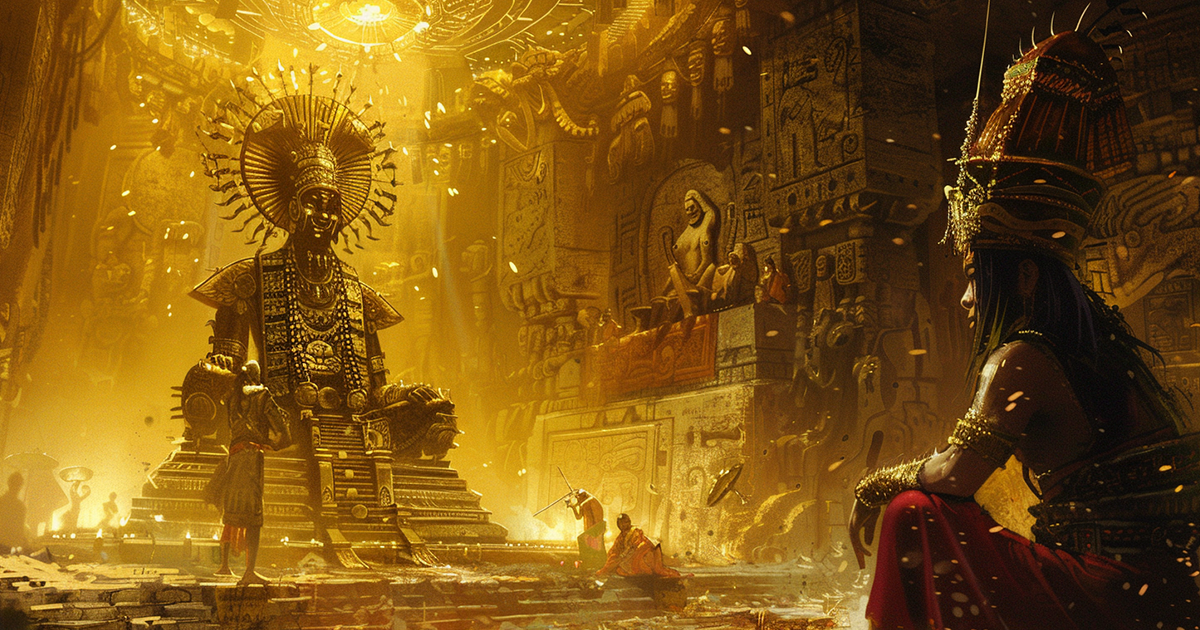Embarking on a journey through the annals of the past and the realms of archaeology reveals a complex tapestry of intriguing connections that frequently challenge conventional interpretations. Recent studies and expeditions have brought to the forefront striking parallels between diverse cultures, suggesting potential cross-cultural influences that transcend both time and geography. A recent exploration at the San Augustine Archaeological Park in Colombia, South America, unearthed a puzzling convergence between ancient Indian and Mayan civilizations, shedding light on an enduring enigma that continues to fascinate scholars and enthusiasts alike.
Under the leadership of David Childress, a proponent of ancient astronaut theories, and Prine Mohan, a Hinduism expert, the expedition uncovered compelling evidence of a potential Hindu presence in the region dating back over two millennia. These discoveries not only challenged established beliefs but also sparked a profound investigation into cultural interconnectedness.
At the heart of their findings were depictions of serpent-like entities guarding sacred sites, reminiscent of the revered Naga beings from Hindu mythology. These representations, featuring serpent figures adorned with cobra-like hoods, bore a striking similarity to similar motifs found in temples throughout Southeast Asia. The presence of such parallel symbols in distant lands raises profound questions about the spread of cultural symbols and spiritual ideas.

Further investigations revealed references to feathered serpents in Mayan mythology, notably Kukulkan, the feathered serpent deity. While traditional interpretations view Kukulkan as a representation of natural forces, proponents of ancient astronaut theories present an alternative perspective: that of an extraterrestrial or spaceman. They highlight depictions of human faces emerging from serpent mouths as indications of advanced technology or spacecraft piloted by beings akin to Hindu Vimanas.
The concept of Vimanas, described in Hindu texts such as the Mahabharata, refers to sophisticated flying machines utilized by divine beings to traverse the skies. Interestingly, similar flying crafts have been depicted in Mayan art, as evidenced by gold artifacts discovered along Colombia’s Magdalena River. Among these treasures are small figurines resembling modern airplanes, challenging prevailing notions of ancient technological achievements.
In a notable experiment, engineers recreated the design of these ancient artifacts, incorporating propellers into enlarged models that successfully took flight. These achievements underscore the skill and advancement of early civilizations, prompting a reevaluation of their technological capabilities and networks of cultural exchange.
The convergence of Hindu and Mayan symbolism suggests a shared repository of mythological imagery and cosmic narratives that transcended geographical boundaries. It necessitates a reconsideration of established historical narratives, acknowledging the interconnected nature of human heritage and the enduring enigmas that continue to inspire the imagination.
While navigating the intricate pathways of ancient history, let us embrace the potential for cross-cultural influences and the mysterious threads that bind us across time and space. By exploring these parallels, we may uncover new perspectives on the diverse mosaic of human experiences and the never-ending pursuit of understanding in the vast cosmos.
